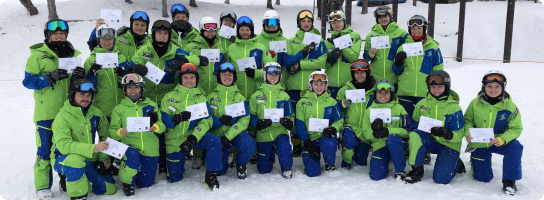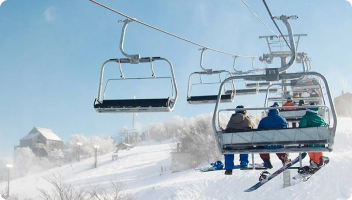Hakuba Ski Jobs & Working A Ski Season
Discover information on working a ski season in Hakuba and browse winter jobs.
View jobs & employers
Hakuba is in the Nagano Valley, located on Japan’s Honshu Island, and was home to the 1998 Winter Olympics. It is in fact the combination of several ski areas, which together make up a pretty impressive range of terrain and one of the best resorts in Japan. Hakuba is known for its stunning mountains, and it has some great, steep terrain to go with it. On the other hand, as it’s well-known, it tends to attract a lot of visitors and powder can get tracked out quite quickly.
If you’re looking to work a ski season in one of Japan’s larger and more popular resorts, Hakuba could be right for you. Learn more about ski seasons here and how to land a ski job in Hakuba.
Train & Work As A Ski/Snowboard Instructor
Spend a full winter training, qualifying and working as a ski/snowboard instructor in Japan or Canada. All-inclusive packages designed for people with no prior instructing experience.
How to Find a Job in Hakuba
Japan has a good working holiday visa program to get your visa. See Work a Ski Season in Japan for further information.
Your main options for work in Hakuba include:
- Working as a ski or snowboard instructor
- Going through a working holiday company or ski internship
- Companies with services aimed at the foreign market, where English is an advantage. The main ones are tour companies, and perhaps some rental shops attached to foreign companies.
Most of the other jobs, such as lifties, mountain operations, grooming, or terrain park crew will go to the local Japanese in the area.
A few places to start looking:
- https://www.skihakuba.com/jobs.htm
- https://thehakubacollection.com/employment/guest-host
- https://www.rhythmjapan.com/about-us/jobs/
- https://www.snownavi.com/job/?lang=en
- http://www.skijapan.com/employment/
- https://www.evergreen-hakuba.com/evergreen-employment/
- https://japanskiexperience.com/jobs/
See Work a Ski Season in Japan for some of the tour companies operating throughout Japan.
Ski or snowboard instructors
If you are a qualified instructor, you will be able to apply directly through the resort websites. See individual resort articles for contact details.
International applicants with foreign instructing certificates may wish to contact the central Japanese body dealing with ski and snowboard instructors, Professional Ski Instructors Association of Japan SIA, to convert their foreign instructing certificate or see whether it is recognized in Japan. www.sia-japan.or.jp.
Hakuba47 ski school is found at https://skijpn.com/job/ and they sometimes post jobs.
Finding Accommodation
Finding a place to rent in Hakuba is difficult if you do not speak Japanese. It can be particularly difficult to navigate terms with a landlord unless you speak Japanese. Most foreigners who come to work in Hakuba are supplied housing by the company they are working for, as part of the job package. It is highly recommended to take them up on this housing offer unless you’re savvy with Japanese or know the local rental market well.
In terms of where to stay, the villages around Hakuba are pretty used to foreigners, so getting around in English is not usually an issue. The villages near Happo One, Echoland, Wadano are pretty popular, as is Goryu. Other towns are smaller and quieter.
It might be best to join the Facebook group Hakuba Buy, Sell and Jobs where there are thousands of English-speaking expats who can assist with any question relating to working or moving to Hakuba for the season.
Nightlife and Outside Work
Hakuba overall has a pretty decent party life, among the best in Japan (probably just surpassed by Niseko, as it’s easiest to get around Niseko). Après-ski is not a huge feature of Japanese resorts, but this can be a plus or minus depending on what you’re looking for.
Echoland probably has the most going on for nightlife, followed by Happo One. Tsugaike has the best selection of authentic Japanese places to eat, with great ramen and izakayas.
The best bars are in Happo One. Goryu has some late-night spots such as Tracks Bar, which goes late and loud.
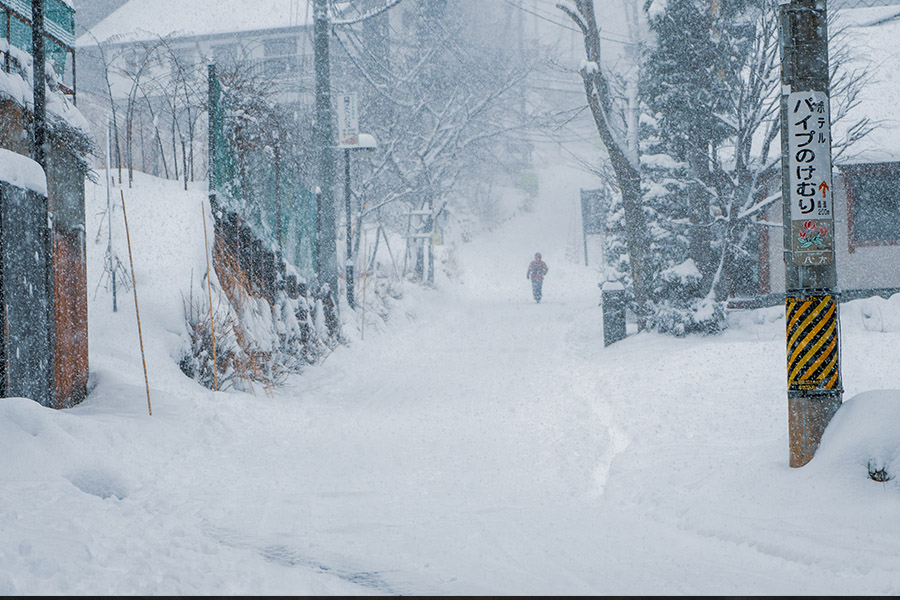
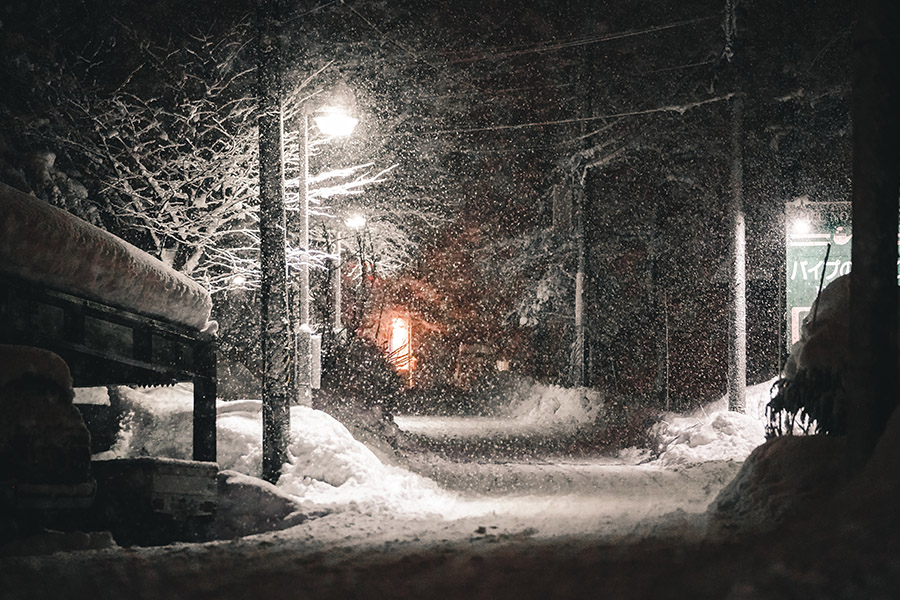
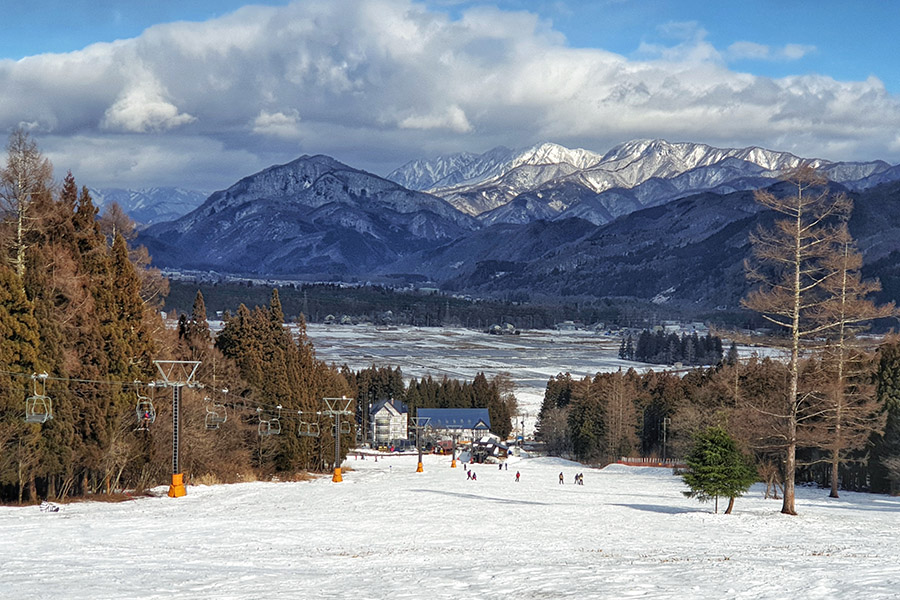
Hakuba is probably the most-visited resort by foreigners in Japan. That means it’s much more westernised, and you’ll find plenty of English-speaking places around town. On the other hand, it means you get less of the traditional Japanese feel which you might find in smaller, less frequented resorts. Hakuba has among the best nightlife of any of the Japanese resorts, though Niseko is still probably a little better given that Hakuba is quite spread out.
The snow is awesome, but perhaps not quite as good as up on Hokkaido, but the terrain is generally a little steeper and craggier than up in Hokkaido.
Location and Getting There
Visitors usually fly into Tokyo airport or Nagano airport. The best way to get to Hakuba from the airports or major cities is by train or bus.
The Hakuba bus takes around 5-6 hours or so and is relatively comfortable and cheaper than the train. It takes a little longer, but not by much. Nagano Snow Shuttle is a good option.
The other good option is to go by train, which is the fastest way to get to Hakuba. It takes around 3-4 hours in total, depending on connections, however, you do need to make transfers and connections, which can be a little annoying depending on how much gear you have. Particularly if you are coming to work for the season, the bus is a little longer but an easier journey.
Japan rail is where you can buy tickets for the journey to Hakuba.
Getting around Hakuba
The villages of Hakuba are connected by a bus service. While it’s good, it can be a little slow to negotiate at times. The ski areas are also not inter-connected, meaning the only real way to get around is by the buses.
Rental cars are more popular for those only visiting for a short while. You can pick up a rental at Haneda, Narita Airport or in Nagano. It will allow you to more easily explore the towns while you’re there.
Terrain
As Hakuba is made up of a number of different ski areas, there is a lot of terrain to choose from. There are 10 resorts (count them 10!) that make up the Hakuba ski area.
It’s one of the main reasons why Hakuba is so popular, as there is so much to choose from, and some of the best steeps in Japan are found in Hakuba. North Island resorts tend to have flatter terrain, though this is compensated by generally better snow.
Watch out though as the crowds really can get quite heavy at Hakuba. You’ll need to spend a bit of time here learning the secrets of the locals to find the untracked powder.
Overall, the terrain is excellent, but the ski areas are not massive by any standard. The highest vertical drop is at Happo One, with 1,071m, though this is still not huge compared to resorts elsewhere in the world. Minekata has the smallest vertical drop at 181m.
Happo One is often considered as the ‘main’ resort of Hakuba. It has some nice, long intermediate runs, and some nice bumps. It also has among the best access to the backcountry in the Hakuba areas. It has the best inbounds steeps in the Hakuba area.
Hakuba 47 and Goryu are linked areas. There is some decent steeper terrain at Hakuba 47 and a small bit of tree skiing. There is also a great terrain park at Hakuba 47. At Goryu, most of the terrain is flatter and suited to beginners and intermediates, and it’s probably the best selection of newbie terrain in the area.
Iwatake has one of the best terrain parks in Hakuba, and it has a few more open runs for intermediates. It also has some awesome access to the backcountry and nice trees.
Tsugaike has the best access to backcountry, but otherwise is full of intermediate and beginner terrain, and some really nice tree-skiing.
Cortina and Norikura has probably the steepest section for trees, and also the best lift access to runs off the side of the hill, where you’ll find people playing all day long on a powder day. Norikura tends to be quieter than Cortina.
Sun Alpina consists of Sanosaka and Kashimayri and also tend to be a little quieter.
Minekata is just like its name – a mini area that you’d probably only check out a couple of times over a season.
Snow and Season at Hakuba
It dumps down heavily in Hakuba, with an average of 11-12 metres per year of snow. This is Japan, after all!
This is just so much compared to most North American and European resorts. However, the snow is not as light and fluffy as the snow in Hokkaido, up further north, where the temperatures generally get and stay lower. Hakuba can get a little warm sometimes, particularly around the base which has a fairly low elevation. This can sometimes lead to melting around the base area. The best snow is usually found in Cortina or Hakuba 47.
The trade-off with Hakuba is the terrain options are a little more varied than up in Hokkaido, and there are some genuine steeps and rocky terrain and Hakuba.
The season usually opens in December and runs through to May, with the most popular times being January and February.


